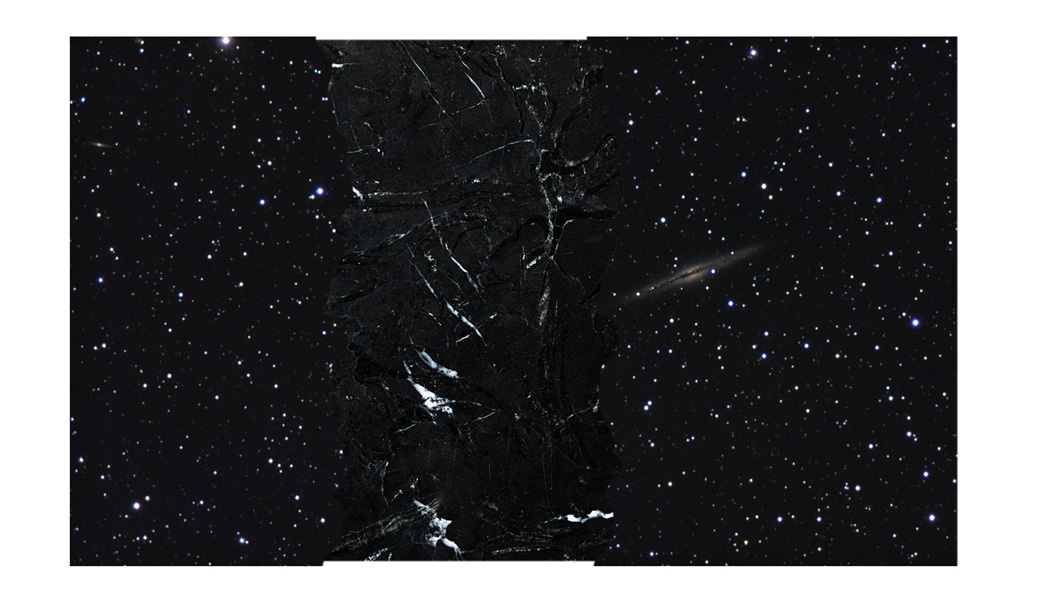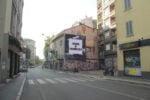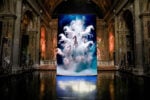Gianni Caravaggio – Uncertain substance

Prima mostra in Italia dell’artista polacco Piotr Łakomi che avrà luogo nello spazio principale della galleria e il progetto di Gianni Caravaggio “Uncertain substance” che si terrà nel project space.
Comunicato stampa
SpazioA ha il piacere di presentare sabato 31 ottobre 2015, alle ore 18, Uncertain substance, una progetto di Gianni Caravaggio, negli spazi del Project Space della galleria.
«Quanto più delicato è il taglio, tanto più grande la rivelazione».
Della Sostanza incerta di Gianni Caravaggio
Ogni volta che contempliamo una statua classica dinanzi alla bellezza dell’opera insieme alla meraviglia ci accompagna anche un senso di lontananza e di inaccessibilità. Da secoli, la perfezione formale non è più l’essenza della scultura. La pietra scolpita della statua classica possiede un senso solo in quanto ha una forma definita e misurata, in quanto è divenuta grazie al fare dell’artista. Possiamo comprendere che di per sé la pietra è concepita dal pensiero classico come qualcosa di informe, nient’altro che un frammento di materia né sensibile, né razionale, solo caos, pura indeterminatezza. L’arte dello scultore concede alla materia grezza la forma, solo grazie al suo gesto la pietra diventa ciò che è. Lo scultore libera una forma perché questa passi dalla sfera ineffabile e inconoscibile del caos, alla visibilità nel cosmo. Il cosmo è l’insieme ordinato e bello dei corpi che hanno preso forma, che sono venuti alla presenza e che pertanto vi abitano mediante il soma. Con il suo apparire, la statua mostra ciò che accade sulla Terra a ogni essere che non può sbocciare da sé: lo scultore è colui che disvela che cosa significa passare all’essere, incedere nel cosmo. Sotto questo aspetto l’essenza dell’arte classica è racchiusa nel pensiero di Anassimandro: dobbiamo pensare all’apeiron, all’indeterminatezza, come oscura origine di tutte le cose da cui tutte le forme traggono vita allontanandosene, negandolo, proprio come la statua può trarre vita solo liberandosi dalla gravità caotica della materia. La vita è una vicenda di forme, un prendere corpo di qualità visibili e tangibili che si aprono ai sensi e all’anima. L’arte è questo prendere luogo nella vita mediante la forma che è misura, bellezza e attraverso ciò trasfigurazione del movimento ciclico della vita, compreso tra l’uscita dall’indeterminato e il ritorno nell’indeterminato.
Ora davanti a miei occhi appare una scultura: un cielo notturno che avvolge un blocco di marmo nero. Un blocco di marmo inguainato da una fotografia: questa pelle fotografica è lacerata e dai tagli posso vedere il marmo scuro. Davanti a me vedo la Sostanza incerta di Gianni Caravaggio. Misuratezza, armonia, insieme ordinato di ciò che è, sono esperienze perdute. La statua greca come semplice visione della sostanza ha lasciato il posto appunto alla sostanza incerta. La statua greca e la Sostanza incerta aprono a due diversi mondi della visione a due universi della sostanza. Da un lato la misura e il cosmo, dall’altra l’incommensurabile e l’infinito. L’incommensurabile e l’indeterminatezza sono la nostra sostanza. L’opera di Gianni Caravaggio mette in scena il nostro rapporto con le cose, la nostra relazione con le immagini: Sostanza incerta. Noi vediamo Sostanza incerta. Noi stessi siamo Sostanza incerta. Lo scultore come nell’antichità continua a donare la visione, ma ciò che porta al nostro sguardo non è più la luminosa misura di ciò che è, bensì l’indeterminatezza della nostra sostanza. Senza alcuna nostalgia per il passato, Gianni Caravaggio getta lo sguardo in profondità dentro questa indeterminatezza che costituisce la nostra materia, il nostro agire, il nostro essere e proprio da questa indeterminatezza - che rimaneva invisibile e inconoscibile per la scultura e per il pensiero classico - nasce la Sostanza incerta.
Tutto è apeiron, tutto è indeterminatezza nella Sostanza incerta. Non la forma come salvifica emersione dall’indeterminato, ma l’oltrepassamento della forma, la messa in mostra della sua pluralità e indeterminatezza è l’immagine dell’infinito, della nostra sostanza. Per questo le lacerazioni, le ferite mi sembrano il punto focale dell’opera, il luogo in cui si annulla la differenza tra esteriorità e interiorità, tra involucro e contenuto, dove la forma si mostra proprio solo come indeterminata, infinita. Il taglio è punto di confine e di collisione è esso stesso luogo incerto, nel medesimo istante possibilità della superficie e sua negazione. La Sostanza incerta conduce lo sguardo nello sconfinato, appellandoci con un: questo tu sei.
La Sostanza incerta è un’etica dell’infinito per immagine. Una bellezza nella sostanza sconfinata è possibile. La bellezza è un taglio. Forse ogni grande opera d’arte oggi non può che aspirare a essere questo. L’universo che si apre ai nostri occhi costituisce uno solo fra gli infiniti tagli possibili, ma ciascuno di essi è esso stesso infinito. La Sostanza incerta ci fa spalancare gli occhi dalla meraviglia, come quando si osservano fenomeni privi di misura come l’arcobaleno, il trascolorare dell’impercettibile superficie delle bolle di sapone, il piumaggio cangiante di certi uccelli. Dove inizia il cielo e dove finisce l’ondeggiare di una fata morgana? Il limite e la forma sono indecidibili, ma il senso dell’evento è limpido davanti a me. Noi sostiamo su questo limite etimologicamente immenso. Lo scultore può svelare la bellezza di ciò che non ha misura, mostrarci in immagine la nostra sostanza. Un filosofo insegnava che in nessun luogo il mondo è così variopinto come nelle pellicole più sottili. Questo ci permette di immaginare come la sua ricchezza stia in ciò che non ha né forma né misura. La Sostanza incerta è in grado di dare vita all’immagine in cui il limite tra superficie e profondità, minuto secondo ed eternità è eliso.
Maurizio Guerri
Gianni Caravaggio (Rocca San Giovanni, 1968) vive e lavora a Milano e a Sindelfingen (Germania). Si è laureato all’Accademia di Belle Arti di Brera nel 1994. Nel 2002 ha ricevuto il premio Fondo Speciale PS1 Italian Studio Program, nel 2005 il premio Castello di Rivoli e il premio Allinovi, nel 2013 il premio ACACIA. Le sue mostre personali si sono tenute a Milano, Torino, Amsterdam, Bruxelles, Duesseldorf, Tokyo. Nel 2006 la mostra personale al Castello di Rivoli per il premio Castello di Rivoli, nel 2008 la mostra Scenario alla collezione Maramotti, e le mostre personali Enfin seul - finalmente solo al Musée d’Art Moderne et Contemporain di Saint Etienne e al MAGA di Gallarate. Ha partecipato a esposizioni collettive a livello nazionale e internazionale tra le quali: Leggerezza alla Lenbachaus di Monaco di Baviera (2001), la Biennale di Mosca (2005) e la Triennale di Izmir (2010). Nel 2011, accanto al filosofo Federico Ferrari è coideatore della mostra Arte Essenziale tenutasi alla collezione Maramotti e alla Kunstverein di Francoforte.
project space
Gianni Caravaggio
Uncertain substance
OPENING: october 31, 2015 – 6pm
until January 23, 2016
Tue - Sat 11am - 2pm / 3pm - 7pm or by appointment
Press Release
SpazioA gallery is pleased to present on Saturday October 31, 2015 at 6 pm, Uncertain substance, a project by Gianni Caravaggio, at the gallery’s Project Space.
«The more delicate the cut, the greater the revelation».
On Uncertain substance by Gianni Caravaggio
Whenever we contemplate a statue of Classical art and the beauty of the work, our sense of awe is also accompanied by a sense of remoteness and inaccessibility. The perfection of form has no longer been the essence of sculpture for centuries now. The stone worked by Classical sculptors has meaning only because it has a well-defined and carefully proportioned form, only because it was brought into existence by the artist’s hand. We may easily understand how stone itself was perceived in Classical thought: as something formless, nothing but a fragment of material, neither sensitive nor rational, and only as chaos, pure indeterminacy. The sculptor’s art grants raw material form, and only thanks to the sculptor’s gesture does the stone become what it is. The sculptor liberates a form in order for it to emerge from the ineffable and unknowable sphere of chaos into visibility in the cosmos. The cosmos is the orderly and beauteous aggregate of all the bodies that have taken form and become present, and for this reason inhabit through soma. With its appearance, a statue shows us what happens on Earth to every being that cannot bloom by its own effort alone: the sculptor is the one who reveals what it means to come into existence, to take one’s place in the cosmos. From this point of view, the essence of Classical art is summed up in the thought of Anaximander: we must think of apeiron, of the ”indefinite”, as the obscure origin of all the things from which all forms take life by advancing from their indefinite nature and denying it, in the same way that a statue can come to life only by freeing itself from material’s chaotic gravity. Life is a matter of forms, the incarnation of visible and tangible qualities that open up to the senses and the soul. Art is this taking place in life through form that is proportioned and beauteous, and through this transfiguration of the cyclical movement of life between emergence from the indefinite and return to the indefinite.
Now a sculpture appears before my eyes: a nighttime sky envelops a block of black marble. A block of marble sheathed in a photograph: this photographic “skin” has been cut, and the dark marble beneath can be seen through the slits. I behold Gianni Caravaggio’s Uncertain substance before me. The sense of measure, harmony, the orderly wholeness of what is, are lost experiences. Greek statuary, as a simple vision of substance, has given way, in fact, to uncertain substance. Greek statuary and Uncertain substance open out to two different worlds of vision and two universes of substance. On one hand, measure and cosmos, on the other hand, the incommensurable and the infinite. The incommensurable and indefinite are our substance. The work of Gianni Caravaggio stages our relationship with things, our relationship with images: Uncertain substance. We see Uncertain substance. We ourselves are Uncertain substance. The sculptor, as in the days of antiquity, continues to donate vision, but what he brings to our eyes is no longer the luminous measure of what is, but rather the indeterminacy of our substance. With no nostalgia for the past, Gianni Caravaggio directs our gaze deep into this indeterminacy that makes up our material, our actions, our being, and it is from this indeterminacy – which remained invisible to and unrecognizable by Classical sculpture and thought – that Uncertain substance is born.
All is apeiron, everything is indefinite in Uncertain substance. Not form as redeeming emergence from the indeterminate but rather the transcendence of form, the ostentation of its plurality and indeterminacy is the image of the indefinite, of our substance. This leads me to believe that the work’s focal point lies in its rips and slits, the places in which the difference between outside and inside, container and content is annulled, where form is revealed precisely and only as indeterminate, infinite. The cut that is both borderline and point of collision is in itself a place of uncertainty, the possibility of the surface and its negation in the same moment. Uncertain substance drives our gaze into the boundless, appealing to us by saying: this thou art.
Uncertain substance is an ethic of the infinite through image. Beauty in unbounded substance is therefore possible. Beauty is a cut. Perhaps every great work of art today can only aspire to be this. The universe that opens up to our eyes is only one of the infinite number of cuts possible, but each one of these is in itself infinite. Uncertain substance makes us open our eyes wide to marvel, such as when we observe measureless phenomena like rainbows, the changing colors on the imperceptible surface of a soap bubble, the shimmering plumage of certain birds. Where does the sky begin and the wavy outlines of a mirage end? The limit and shape are non-decidable, but the sense of the event is clearly before my eyes. We pause at this etymologically immense limit. The sculptor can unveil the beauty of what has no measure, can show us our substance in images. One philosopher taught that nowhere is the world more colorful than in the slenderest of films. This allows us to imagine how its richness lies in what has neither form nor measure. Uncertain substance is capable of giving life to the images in which the boundary between surface and depth, between one second and eternity is eclipsed.
Maurizio Guerri
Gianni Caravaggio (Rocca San Giovanni, 1968) works and lives in Sindelfingen (Germnaia). He graduates at the Brera Fine Art Academy in 1994. In 2002 he received the Special Fund prize PS1 Italian Studio Program, in 2005 the Castello di Rivoli and the Allinovi prizes, in 2013 ACACIA prize. He had solo show in Milano, Torino, Amsterdam, Bruxelles, Duesseldorf, Tokyo. In 2006 he had a solo show at Castello di Rivoli for the Castello di Rivoli prize and in 2008 the exhibition Scenario at the Maramotti collection,the solo shows Enfin seul - finalmente solo at the Musée d’Art Moderne et Contemporain of Saint Etienne and at MAGA, Gallarate. He took part in group exhibitions such as Leggerezza at Lenbachaus, Munich (2001), Moscow biennale (2005) and Izmir Triennal (2010). In 2011, together with the philosopher Federico Ferrari is co-ideator of the exhibition Arte Essenziale at the collezione Maramotti and at Frankfurt Kunstverein.



